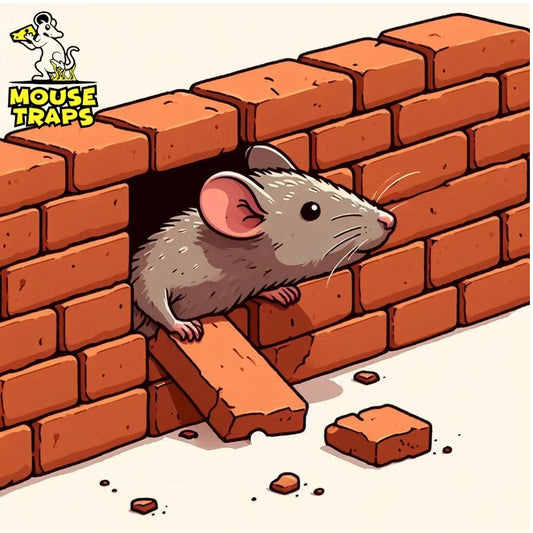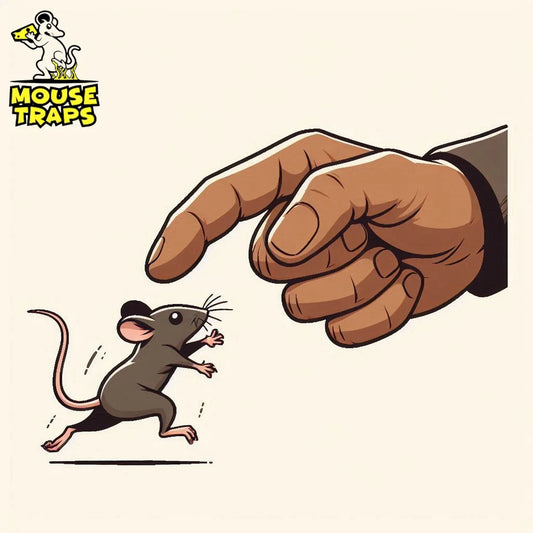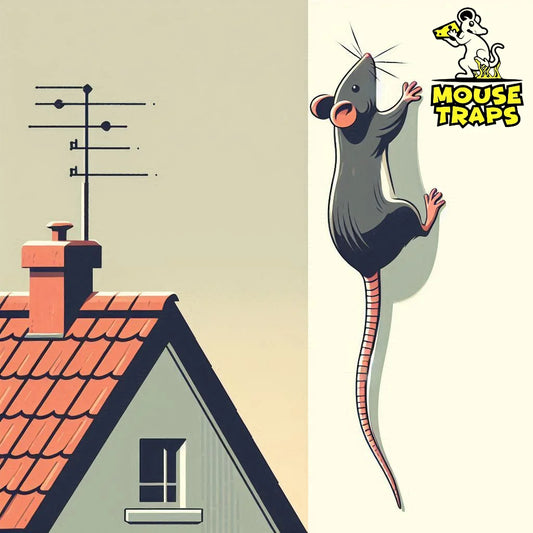Introduction:
Dealing with a rat infestation in your garden greenhouse can be a daunting task, but fear not! By using the approaches and resources you can successfully. Deter these troublesome rodents from causing damage, to your plants. In this guide we will explore methods to deal with rat problems to ensure a pest environment in your beloved greenhouse.
Understanding Rat Behavior: What Draws Rats to Your Greenhouse?

Rats are attracted to garden greenhouses for several reasons, including:
- Abundance of food sources such as fruits, vegetables, and seeds.
- Shelter from harsh weather conditions.
- Safe nesting sites among plant debris and clutter.
- Easy access through small openings and gaps.
Understanding these factors is crucial in devising an effective pest management plan.
Assessing the Extent of the Infestation:

Before implementing any control measures, it's essential to assess the severity of the rat infestation. Here's how:
- Inspect the greenhouse thoroughly, paying attention to signs of rat activity such as droppings, gnaw marks, and burrows.
- Set up motion-activated cameras or traps to monitor rat movements.
- Keep track of any damage inflicted on plants and structures.
Prevention is Key: Securing Your Greenhouse

Taking proactive steps to prevent rat infestations is paramount. Consider the following preventive measures:
- Seal all entry points with wire mesh or steel wool, focusing on gaps around doors, windows, and vents.
- Keep the greenhouse clean and free of debris to eliminate potential nesting sites.
- Store food in airtight containers and elevate them off the ground to discourage rats from scavenging.
- Trim overgrown vegetation around the greenhouse to reduce hiding spots for rodents.
Natural Predators: Harnessing Nature's Pest Control

Introducing natural predators into your greenhouse ecosystem can help keep rat populations in check. Consider attracting:
- Barn owls: Install owl boxes in nearby trees to encourage these nocturnal hunters to patrol your garden.
- Cats: Adopting a feline companion can deter rats with their mere presence.
- Snakes: Non-venomous snake species can help control rodent populations without posing a threat to humans or pets.
Implementing Trapping Techniques:
When dealing with a rat infestation, trapping remains one of the most effective control methods. Here are some tips for successful trapping:
- Use Sticky Glue Mouse Traps baited with peanut butter or dried fruits, strategically placing them along rat pathways.
- Opt for humane traps for catch-and-release purposes, ensuring rats are safely relocated away from your greenhouse.
- Regularly check and reset traps to maintain their efficacy.
Live Humane Mouse Traps:
Live humane mouse traps are designed to catch mice without harming them, allowing for their safe release back into the wild. These traps typically consist of a box or cage with a one-way entry mechanism, making it easy for mice to enter but difficult for them to escape. Once inside, the mice are unharmed and can be released far away from the property.
Click Here To Buy Live Humane Mouse Traps

Benefits:
- Humane: Live traps offer a humane solution to dealing with mice infestations. Instead of killing the mice, they capture them alive, allowing for their safe removal.
- Environmentally friendly: Since live traps don't use any poisons or chemicals, they are environmentally friendly and pose no risk to other animals or the ecosystem.
- Reusable: Live traps can be reused multiple times, making them a cost-effective and sustainable option for mouse control.
- Safe: Unlike traditional snap traps or poison baits, live traps are safe to use around children and pets since they don't pose any direct harm.
- Legal compliance: In some areas, using lethal traps or poisons for pest control may be regulated or prohibited. Live traps provide a legal and ethical alternative for managing mouse infestations.
Sticky Glue Mouse Pads Traps:
Sticky glue mouse pads traps consist of a flat surface covered in adhesive glue. When a mouse walks onto the pad, it becomes stuck to the glue, preventing it from escaping.

Benefits:
- Easy to use: Sticky glue traps are simple to set up and require no bait or additional components.
- Cost-effective: Glue traps are often inexpensive compared to other types of mouse traps, making them an affordable option for pest control.
- No poisons: Glue traps don't use any poisons or chemicals, making them a safer option for households with children and pets.
- Versatile: Sticky glue traps can be placed in various locations, including along walls, in corners, or under furniture, making them effective in capturing mice in different areas of a property.
- Visible results: Glue traps provide a visible indication of their effectiveness by trapping mice directly onto the adhesive surface, allowing homeowners to see the results of their pest control efforts.
Seeking Professional Assistance:

In cases of persistent or large-scale infestations, it may be necessary to enlist the help of pest control professionals. These experts can:
- Conduct thorough inspections to identify entry points and nesting sites.
- Implement targeted control measures tailored to your greenhouse's unique needs.
- Provide ongoing monitoring and maintenance to prevent future infestations.
Maintaining Vigilance: Regular Inspections and Maintenance
Even after successfully managing a rat infestation, it's crucial to remain vigilant and proactive in maintaining a pest-free environment. Make it a habit to:
- Conduct regular inspections of your greenhouse for signs of rodent activity.
- Address any potential entry points or conducive conditions promptly.
- Stay informed about new pest management strategies and technologies to stay one step ahead of potential infestations.
FAQs:
Q: Can rats cause damage to greenhouse structures?
A: Yes, rats can gnaw through wiring, insulation, and plastic materials, compromising the integrity of your greenhouse.
Q: Are there any eco-friendly methods for rat control?
A: Absolutely! Implementing natural predators, such as owls and cats, is an eco-friendly way to manage rat populations.
Q: How long does it take to eliminate a rat infestation?
A: The duration varies depending on the severity of the infestation and the effectiveness of control measures, but it typically takes several weeks to months to fully eradicate rats from a greenhouse.
Q: Can rat poisons harm other wildlife or pets?
A: Yes, rodenticides can pose risks to non-target animals if not used properly. It's essential to follow all safety guidelines and use bait stations to minimize accidental exposure.
Q: What should I do if trapping methods aren't working?
A: If your trapping techniques don't work it might be an idea to reach out to pest control experts. They can evaluate the situation. Suggest ways to handle the problem.
Conclusion:
Handling a rat problem in your garden greenhouse calls for patience, hard work and a rounded strategy. By grasping how rats behave putting in place actions and using control methods you can effectively handle and stop infestations to maintain a healthy environment, for your plants. Keep proactive stay informed and don't hesitate to get help, from experts if necessary. With the right strategies in place, you can reclaim your greenhouse from unwanted rodent guests and enjoy the fruits of your labor without fear of pest-related setbacks!




